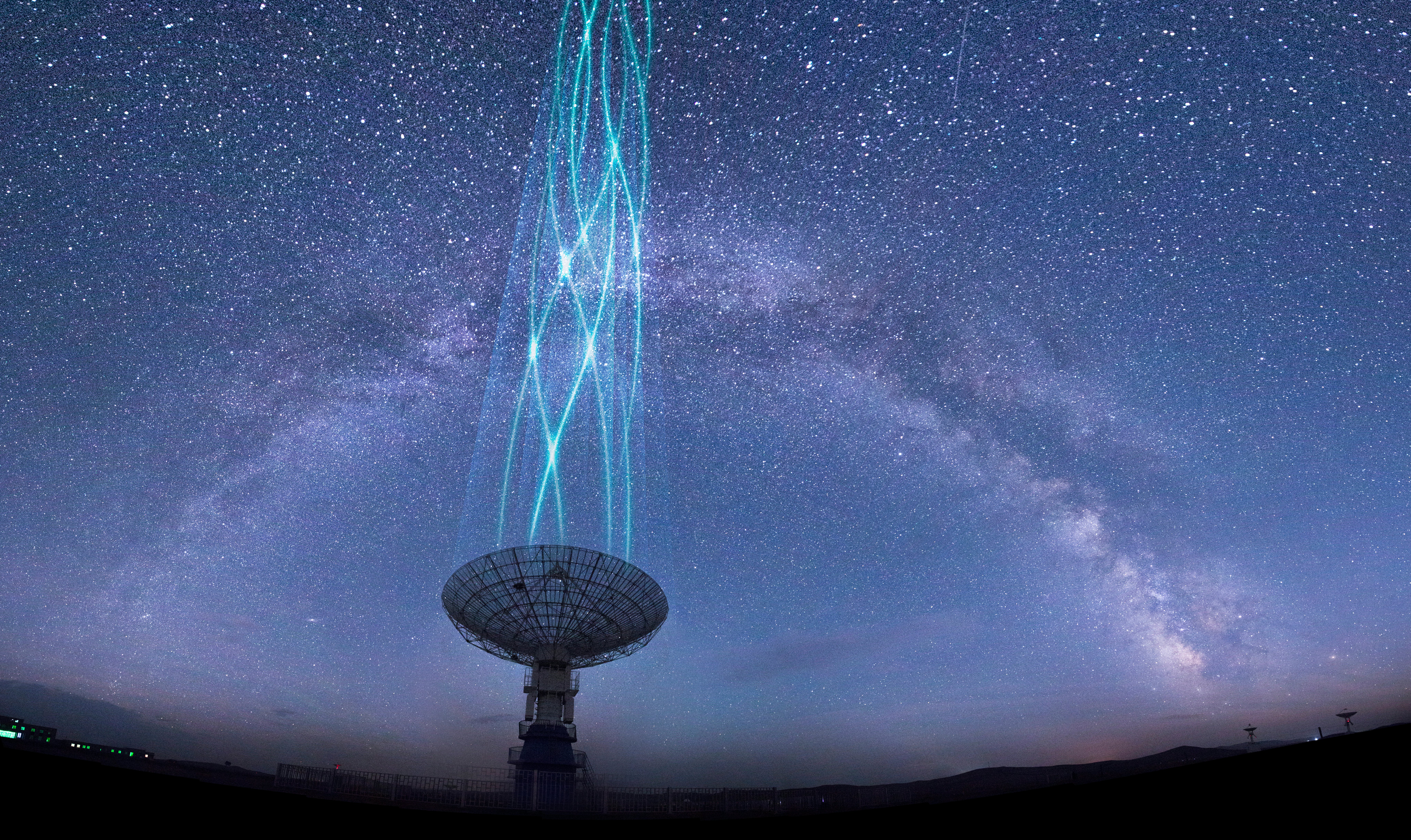
Is it a multimedia art project? Or a rehearsal for alien contact? Let’s call it both: Researchers specializing in the search for extraterrestrial intelligence, or SETI, worked with a media artist to stage the receipt of an interstellar message — and a global effort to decode the message.
The project, titled “A Sign in Space,” is orchestrated by media artist Daniela de Paulis in collaboration with the SETI Institute, the European Space Agency, the Green Bank Observatory, and the Italian National Institute for Astrophysics (also known as INAF).
The metaphorical curtain rose on May 24, when ESA’s ExoMars Trace Gas Orbiter transmitted an encoded radio message from Martian orbit to Earth at 3 p.m. Eastern.
Sixteen minutes after transmission, the signal was received by three radio telescope facilities that have previously played starring roles in the SETI quest: the SETI Institute’s Allen Telescope Array in California, the Robert C. Byrd Green Bank Telescope in West Virginia, and INAF’s Medicina Radio Astronomical Station in Italy.
The data transmission will be processed by the three radio astronomy teams and then will be made available to the public for decoding.
Processed data will be stored securely in collaboration with the Breakthrough Listen to Open Data Archive and Filecoin, a decentralized data storage network.
Anyone working to decode and interpret the message can discuss the process on a Discord server set up for the project. Findings and observations can be submitted to the team via a secure form on the project’s website.
“A Sign in Space” is also presenting a series of Zoom-based discussions in the weeks to come, focusing on the societal implications of detecting a signal from an extraterrestrial civilization. Check out the schedule of events on the SETI Institute website to register, and keep checking back for updates.
De Paulis, the artist behind “A Sign in Space,” is a former contemporary dancer and licensed radio operator who currently serves as artist-in-residence at the SETI Institute and the Green Bank Observatory. She has incorporated radio technologies and philosophies in her art projects since 2009 and is a regular host of the Wow! Signal Podcast.
“Throughout history, humanity has searched for meaning in powerful and transformative phenomena,” de Paulis said today in a news release. “Receiving a message from an extraterrestrial civilization would be a profoundly transformational experience for all humankind. ‘A Sign in Space’ offers the unprecedented opportunity to tangibly rehearse and prepare for this scenario through global collaboration, fostering an open-ended search for meaning across all cultures and disciplines.”
There already have been a few unplanned rehearsals for alien contact, sparked by false alarms encountered during SETI surveys. Those experiences suggest that any apparent detection of signals from an extraterrestrial civilization wouldn’t be kept secret for long.
“Rest assured that the first thing anyone would do upon detecting a tantalizing signal is to contact people at other observatories to request help in confirming the discovery,” SETI Institute astronomer Seth Shostak said. “Lots of people would know. Secrecy is neither a possibility nor a policy.”
“A Sign in Space” could shed light on what happens next.
“This experiment is an opportunity for the world to learn how the SETI community, in all its diversity, will work together to receive, process, analyze, and understand the meaning of a potential extraterrestrial signal,” said Wael Farah, project scientist for the Allen Telescope Array. “More than astronomy, communicating with E.T. will require a breadth of knowledge. With ‘A Sign in Space,’ we hope to make the initial steps towards bringing a community together to meet this challenge.”
This article was originally published on Universe Today by Alan Boyle. Read the original article here.







